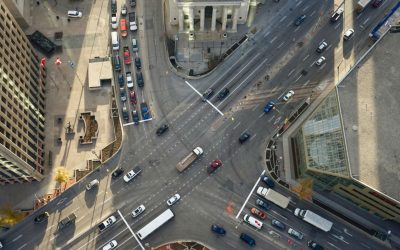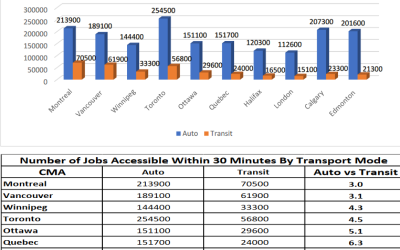Funding public transit is one of the biggest problems facing cities today. Often the trouble is that a few high-cost, low-ridership routes drag down an entire system. That puts policymakers in a tough spot. They might eliminate these unprofitable lines, as has been suggested before, but in doing so they would harm a considerable number of people who rely on that service as their primary mode of transportation.
Over at New Geography, Steve Lafleur revives the debate and argues that low fares are part of the reason transit lines are struggling. In response, he offers an admittedly "controversial" solution: "Transit should operate on a for profit basis and its prices should closely reflect market forces — even if it means that transit fares increase."
The idea of increasing ridership by raising fares is not without some recent precedent. Writing last week at The New York Times Opinionator blog, Lisa Margonelli points to a study from earlier this year comparing transit ridership in Germany and the United States. Over the same period of time, German transit agencies grew ridership while doing something similar to what Lafleur proposes — namely, increasing fares and slashing service. Writes Margonelli:
Between 1990 and 2007 Germany decreased its miles of service and nearly doubled fares, but ridership rose by 22 percent and riders paid for 77 percent of the cost of the service. The United States, by contrast, increased its service miles by 20 percent, and ridership remained flat when population growth was taken into account.
Now German riders got something for their higher fares: much improved quality. But even with that in mind, some very important qualifiers to the fare hike must be considered. First and foremost, the increased fares only applied to people buying single tickets or daily passes. Riders who purchased monthly passes — in other words, regular riders — got steep discounts. In some places monthly riders paid 60 percent less than single-ride fares. The offer was so attractive that whatever the agencies lost in price, they more than made up for in volume. From the report, which appeared in the journal Transport Policy [PDF]:

More important than fare changes were the limitations simultaneously imposed on car travel. While German transit agencies did their best to attract riders to a higher-quality service, the government implemented a number of policies that made driving "less convenient and more costly," according to the report:
Transport, taxation, and land-use policies at all levels of government have helped to make German public transport more attractive compared to the automobile. For example, area-wide traf?c calming, car-free pedestrian zones, increased fees for car parking, and reduced parking supply slow down car travel, raise its cost, and make it less convenient. Similarly, federal taxation policies have helped make car use more expensive. For example, from 1999 to 2003 the federal government increased the gas tax by h0.03 per liter each year to a total of h0.15 over ?ve years (BMF, 2005). In 2007, the share of taxes in the price of gasoline was four times higher in Germany than the USA (IEA, 2008). Sales taxes on new vehicle purchases were three times higher in Germany than the USA (BMF, 2008; USDOT, 2001).
In other words, higher fares did lead to greater ridership on German transit, but only when coordinated with harsh automobile policies — not in isolation.
In fairness to Lafleur, he does mention reducing "some of the automobile's advantages" in his lengthy discussion, and the improvements made to Germany's systems do lend some support to his belief that it's "convenience, and not lower prices," that are the key to increasing ridership. But the prices themselves should be adjusted with caution — especially when it comes to raising them. In the July issue of Urban Studies, a group of researchers discovered what they call "asymmetric behavior" among transit riders. This behavior suggets that while lowering fares does attract riders, increasing fares discourages them to a much greater degree. Unless you also discourage alternative travel modes, raising transit fares may permanently damage one's desire to ride.


